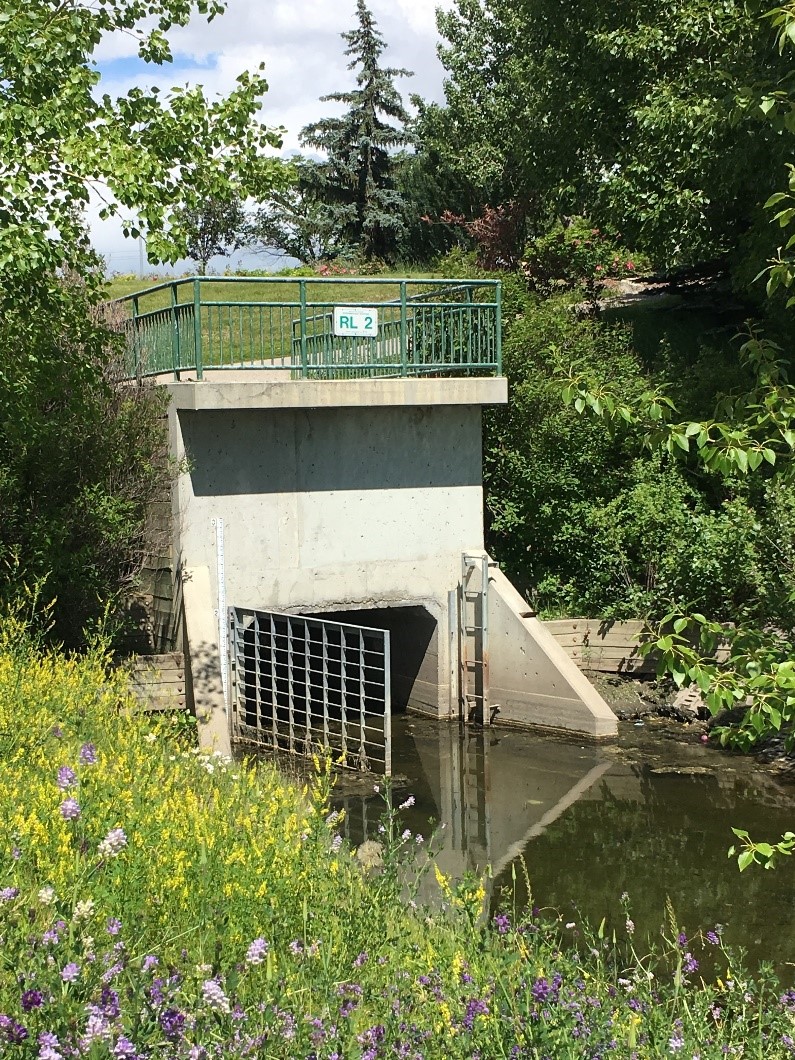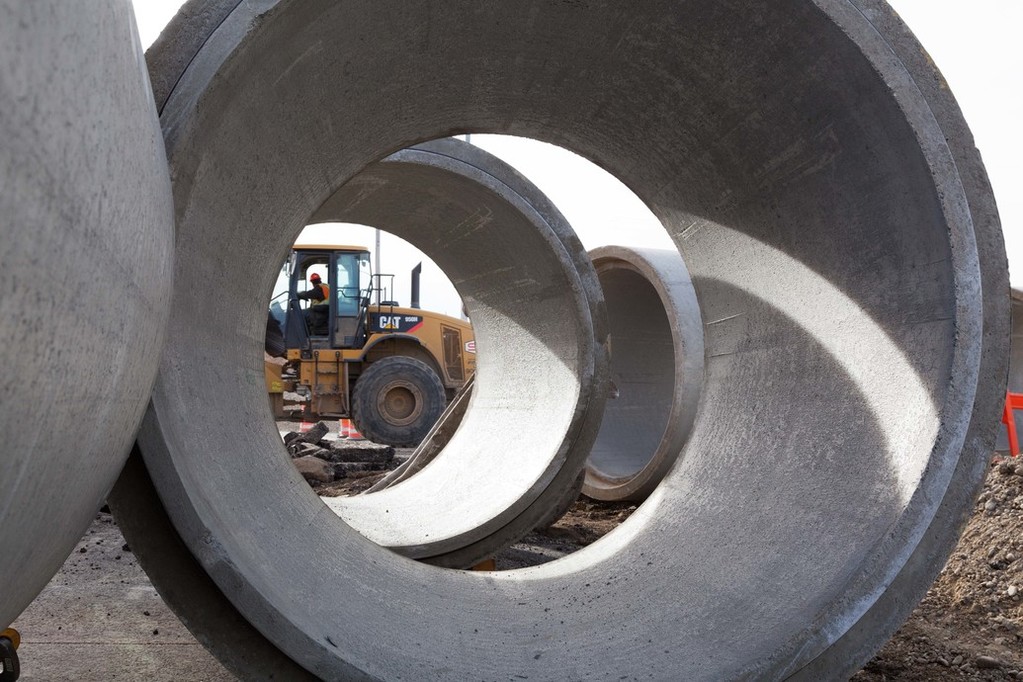Stormwater Management plan and budget
Stormwater Management is a highly regulated, essential and public health focused service that protects property from flooding and ensures our watersheds are healthy by working with citizens and partners.
Our service manages water from rain or snow/ice melt by collecting, storing, or moving it into the nearest river or creek through storm drains, pipes, ponds and outfalls. To prepare Calgarians for emergency response to flooding, we work with the community and other levels of government.
We monitor river water quality and quantity, assess riverbank health, and we are involved in land use and development issues to reduce water quality impacts and flood risk in Calgary and the region.
Our customers
- All Calgarians benefit from stormwater management, particularly homes, businesses and communities at higher risk of flooding.
- Developers also receive guidance and oversight as they complete stormwater design and planning.
- To be future-ready, we must listen to citizens, businesses and customers.
Our partners
- Non-governmental organizations
- Community groups
- Education partners
- Government agencies (Alberta Environment and Parks, Infrastructure Canada);
- Upstream/downstream municipalities
- River users
- Infrastructure operators
- Landowners and Developers
- City services (Fire, Emergency Management, Transportation, Parks, Planning)
- Regional municipalities
- Calgary Metropolitan Regional Board
Value to Calgarians
- ensures public safety, mitigates property damage and reduces localized and river flooding
- improves our city's resilience, through multi-pronged river bank preservation, public flood readiness programs and climate change response
- riparian areas help make Calgary a great place to live
- river areas offer recreation and enjoyment opportunities
- ensures healthy rivers for Calgarians and downstream users that value river protection and habitat preservation
What we deliver
- Stormwater, the water from rain and melting snow, is collected and diverted, reducing local and river flooding.
- Storm ponds and green infrastructure treat the stormwater, sediment and other pollutants before they are released to rivers, creeks and local water bodies.
- Customers can trust that we work with communities and partners to protect rivers and natural areas.
Budget breakdown
Operating and capital budgets explained
The budgets you see here are expenditures net of recoveries.
The City develops two budgets to create impact aligned with Council’s Strategic Direction:
- The four-year (2023-2026) operating plans and budgets
- The five-year (2023-2027+) capital plans and budgets
The operating budget includes revenues, recoveries and spending related to ongoing operations. These include:
- Salaries, wages and benefits.
- Day to day programs, maintenance and services.
- Administration costs (e.g., insurance).
- Fuel
- Utilities
- Capital financing costs.
The City's total net operating budget is zero. This means we budget to collect the revenue needed to deliver services to Calgarians — no more, no less. We collect this revenue through property taxes and other sources.
The capital budget pays for long-lived assets. These provide the foundation for the services Calgarians rely on. They include:
- Maintenance of current infrastructure (e.g., bridges, buildings and playgrounds).
- Upgrades to existing community infrastructure.
- New infrastructure to provide services in areas that are underserved (e.g., Green Line).
- New infrastructure for growing areas of the city.
Learn more about our 2023-2026 Service Plans and Budgets.
See how the budget has been adjusted since November 2022
Measuring performance
We are measuring our performance in five areas. Each value is the goal we expect to reach by 2026.

What we've heard
We prioritize understanding our customers’ values, priorities, and service expectations to develop levels of service, guide continuous improvement, and inform long-term planning. Based on our most recent research, our customers’ top priorities are the health of the river, public safety and reducing the risk of river and street flooding.
Customers expect a low risk of localized and river flooding events that cause property damage, disrupt travel or pose safety risks. Two-thirds of customers expect us to manage stormwater quality and riverbank health to maintain river water quality and riparian health at current levels.
Customers want stormponds in their community to be well maintained, functional and safe. Customers expect us to deliver this and more at a fair price, with predictable and accurate billing.
Participate and view results of City researchWhat we're watching
- Climate change will alter how and when we receive precipitation and could lead to increased localized and river flooding. Improvements in design, policy, and levels of service are required to protect property.
- Citizen expectations and the regulatory environment continue to evolve, resulting in increased expectations for environmental accountability and progress in spaces like stormwater re-use. This evolution requires flexibility in operations and impacts future planning.
- Through engagement, improved understanding of customer expectations helps the service better respond to storm pond safety needs, facilitate collaborative opportunities with the development industry and correct drainage challenges within neighbourhoods.
- We are watching for opportunities to increase capacity with urban densification and create greater service equity for our diverse customer base.
- Underpinning everything, our services must remain affordable for everyone.

Our initiatives
What we plan to do
We will work with communities and partners to deliver infrastructure and programs to ensure public safety, reduce property damage, and protect our rivers. We are committed to climate change mitigation and reducing the number of properties at risk of river and community flooding.
How we're going to get there
- Reduce risk of localized flooding by continuing to invest in community and local drainage improvements, evolving the community drainage program to achieve desired levels of service, and quantifying the investments needed to address gaps and physical limitations of stormwater infrastructure in established communities.
- Create safe and resilient communities through the continued delivery of strategic initiatives and capital flood mitigation projects to reduce the risk of river flooding.
- Build resilient communities by guiding redevelopment in established areas to mitigate flood risks and working with developers on innovative stormwater management solutions that enhance public spaces.
- Maintain service resilience by ensuring appropriate resources to respond to more frequent and extreme events and operate the growing Stormwater Management network (334 ponds and wetlands, 33 lift stations, 934 outfalls and over 5,000kms of underground pipes).
- Build understanding of customer interactions and expectations of the Stormwater line of service. Develop programs that build customer awareness and shared responsibility for managing water quality and quantity on private property.

